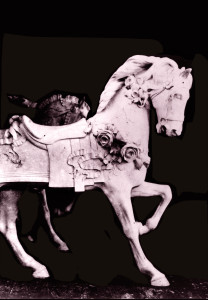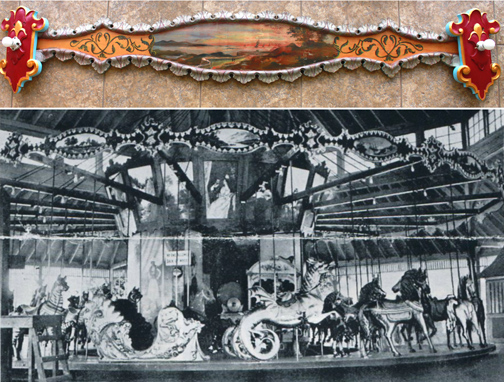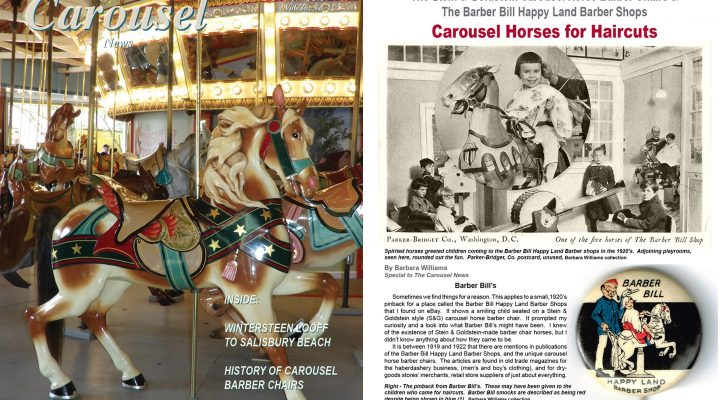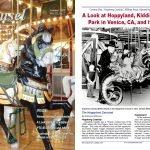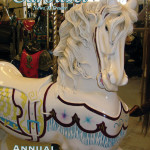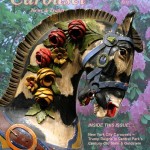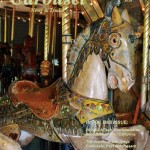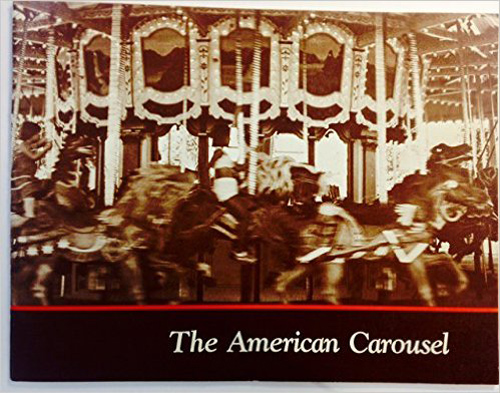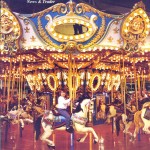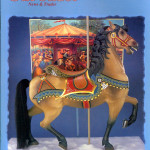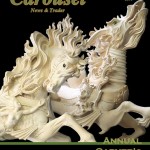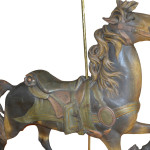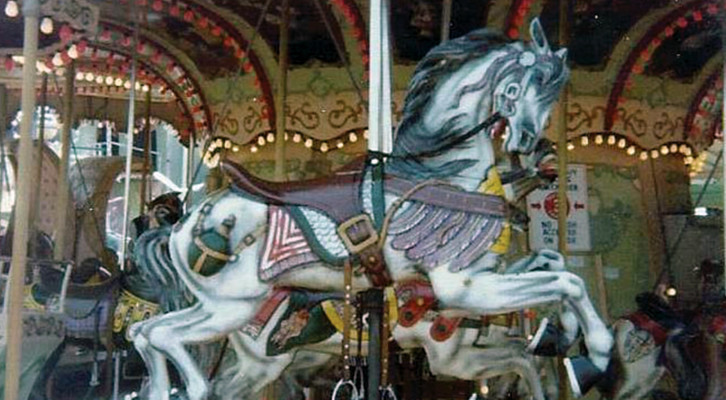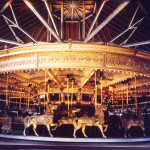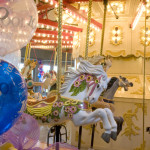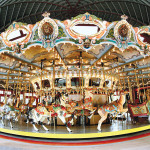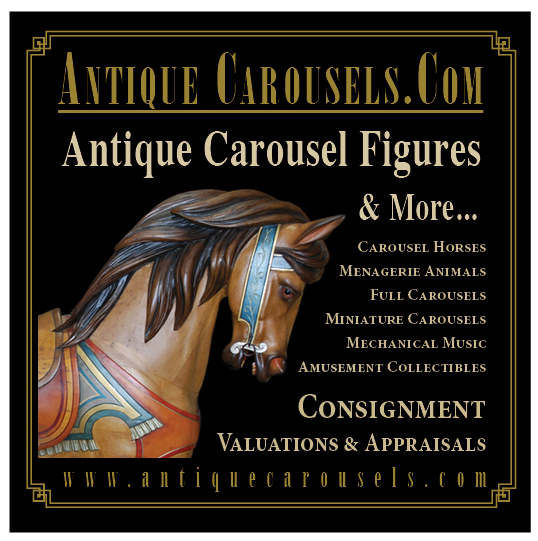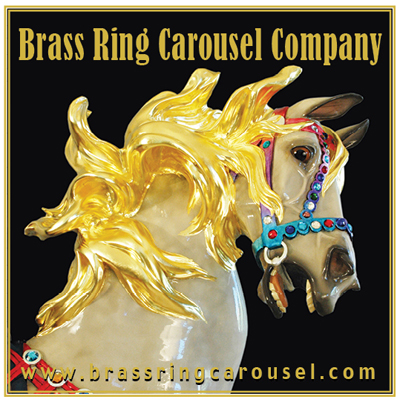Predicting a Bright Horizon for Our “Golden Age” Historic Carousels
By Roland “Rock” Hopkins
Editor, The Carousel News & Trader, 2006-2013
The hand-carved moving pieces of art, the grand American carousels have had a perilous ride since the business of making them came to a halt with the Great Depression.
World War II would follow, which in the end would revitalize our amusement parks for a while, like it did so many things. But, with “the loss of innocence” in the early 1960s, the carousels, along with their surrounding amusement parks, would for most, begin a long, slow decline.
Ease of long distance transportation. Mega parks, and the rise of the American middle class and longer family vacations, would take their toll on hundreds of small family parks, at the same time, for so many, the waterfront property they were on would become more valuable than the parks themselves along with its contents and revenues.
While hurricanes, storms, floods and fires brought the end to many of the great hand-carved “Golden Age” carousels through the 1930s, ’40s and ’50s. It would be the decline of the family parks around them that would be the end of the spin for so many great American carousels in the 1960s, ’70s, ’80s and through the ’90s.
And it was there, around the turn of the century, that everything sort of stopped. Whalom Park Looff was the last major carousel to fall to an auction in 2000. The few parks (and carousels) that survived would continue to survive. The collector craze had run its course and the market was saturated with thousands of antique carousel animals.
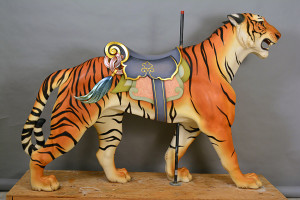
There are plenty of antique animals to keep collectors happy for the rest of time, like this beautiful Dentzel tiger recently painted for a private owner by carousel artist, Pam Hessey. We would do well to keep the remaining tigers on operating carousels right where they are.
Things have remained pretty quiet for over a decade now. Auctions are very few and far between and usually feature only a few animals, not hundreds. Most of our saved carousels are spinning along (until most recently). And there are a handful of great ones in storage that would like to come out to new welcoming homes, but it is hard to find the right fit and buyer/caretaker.
I’m really not quite sure why. Simple lack of vision and eduction I think. In my mind, the carousels are spinning museums unto themselves. Boutique children’s museums, family museums, educational museums, senior museums — and both classy and fun function space to boot.… a nicely restored grand carousel in a nice building with proper space and services around it should be among the favorite and most popular places in the city or town for a party, big or small. From children’s birthday’s to a ritzy black tie corporate affair. And weddings and holiday parties should be booked far ahead. And school trips, and senior trips and other arranged visits, with a fun and interesting education presentations available with it. There is much more history to tell from the great American carousel than just the carving of it and the mechanics. The great carousels were there for all of the ups and downs of the 20th century.
With a nice friendly staff, a smartly stocked but simple gift shop, and edible concessions all run properly, the carousel ticket price should be negligible, and the proceeds from tickets all gravy. It should not be the carousel ticket sales that keep a carousel going around, but instead, all that is going on around the carousel. A fun, friendly, boutique museum of interest to all ages. And it should be a welcome place to gather and meet. Some may just relax with coffee iPad and watch it go around. Nothing wrong with that. Starbucks makes billions with nothing more than coffee and a place to sit with your iPad.
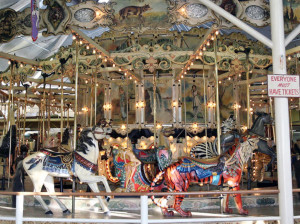
The historic Herschell-Spillman menagerie carousel, similar to the ride that will be restored and installed at the new Canalside waterfront development in Buffalo.
Easy to say, “Easier said than done,” — but if the location is right, and it is done right, just as they did a hundred years ago,put up a carousel they will come.
Compared to most museums, aquariums and like attractions, a historic carousel is pretty compact and pretty affordable. And if restored right to begin with, pretty maintenance free as well. Much more so than many folks would think, or than they might be told by someone trying to sell them a new carousel.
And not only are you adding a nice boutique Americana museum to you city or town with a historic carousel, you are adding a family and tourist attraction of national and even international appeal. Few folks will travel from afar to visit your city’s particular children’s museum or aquarium, (unless among the world class ones), and no one will travel from afar just to visit your new carousel, no matter how nice it is.
But, your historic carousel is a piece of American history. It has touched folks at some point all over the world. Folks will and do travel from afar just for a ride and to see a historic carousel, as well, they certainly will add it as a side trip if they are traveling near.
Properly operated, the future of the few remaining great American carousels is very bright. It might seem like a million or two is a big expense, but for an national attraction? That is pretty cheap. For a new family friendly museum in your city or town? If you think of it, and run it like a the boutique Americana museum that it is, it is pretty darn affordable. Where else can you get a museum — with attraction included — for just a couple of million. And for a new national landmark in your city and all of the endless positive publicity around it? That is priceless.

